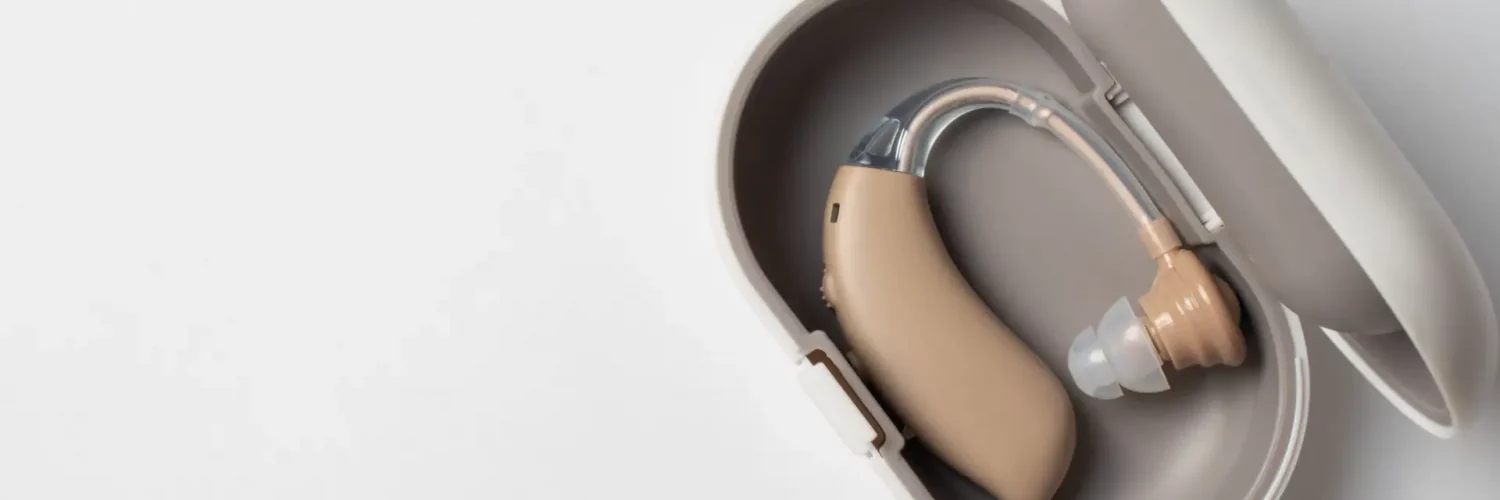For the benefit of the public, R’ Yaakov Nirenberg Shlit”a, a member of the Beis Medrash, has compiled a summary of several as-yet unpublished rulings from haGaon Rav Asher Weiss Shlit”a concerning the use of hearing aids and cochlear implants:
1. Is the artificial voice heard via a device considered a human voice?
From a technical perspective, hearing through a hearing aid is analogous to hearing through a microphone, as sound waves are converted into electrical signals that produce a sound resembling the original voice. Poskim have long discussed whether one may fulfill obligations when hearing via a microphone. Some rule that one is Yotzei (though their responses suggest that they did not fully understand how these devices function, assuming that the listener hears the amplification of the actual voice when, in reality, there is no human voice at all).
R’ Shlomo Zalman Auerbach zt”l (Minchas Shlomo 1:9) ruled that a person does not fulfill his obligation via a microphone since the sound is an electrical reproduction, not a human voice. However, he relates in an addendum that he heard the Chazon Ish assert that since the voice is generated by a person’s speech and is heard in real-time, it is considered as if it is the actual voice. R’ Moshe Feinstein zt”l was similarly inclined, permitting one to fulfill the Mitzva of Megila in this way. haGaon Rav Asher Weiss Shlit”a explained their reasoning: since the voice reaches the listener unchanged and in real-time it is considered Sh’mia. Rav Asher, however, is inclined to follow R’ Shlomo Zalman’s view.
Nevertheless, if a person cannot hear without a hearing aid, he should listen to the Megila with the device, relying on the opinions that permit it. However, he should not recite a Bracha.
2. Hearing Tekias Shofar with one hearing aid
Rav Asher addresses the case of a person who requires a hearing aid in one ear but not the other. In this scenario, one ear hears the actual sound of the Shofar, while the other hears an artificial representation of it. This raises the question: Does this individual effectively hear the Shofar or a mix of two different sounds?
If a person hears two sounds simultaneously but can focus on one, such as hearing both a Shofar and a trumpet while concentrating on the Shofar, he fulfills his obligation. However, in this situation, the person cannot distinguish between the real and artificial sounds, causing him to hear a blend of both a valid and an invalid Shofar sound. Therefore, he does not fulfill his obligation. The solution is to either remove the hearing aid from that ear or cover it with his hand.
3. Using a hearing aid on Shabbos
Although hearing aids operate in a manner analogous to microphones, with the primary distinction being their size, the Gedolei haPoskim permit their use on Shabbos and Yom Tov. However, most Poskim do not elaborate on the rationale to differentiate between microphones and hearing aids, apart from the Igros Moshe. R’ Moshe outlines four key reasons that prohibit the use of a microphone on Shabbos:
- Hashma’as Kol and Avsha Milsa[1] – The Rema (O.C. 252:5) permits using a clock that makes noise on Shabbos since everyone knows it was set before Shabbos.[2] Since the use of a microphone is on Shabbos and it is not set up beforehand, it is prohibited due to the Issur of Hashma’as Kol and Avsha Milsa.
- Increased electrical activity – Speaking into a microphone increases electrical output, which may involve a Melacha.
- The artificial nature of the sound – The voice is duplicated through technology, possibly constituting an Issur d’Oraisa.
- Concern about adjusting the device – Since amplification systems often need adjustment, there is a concern that one will adjust them on Shabbos. Chaza”l prohibited Hashma’as Kol for this very reason.
Notwithstanding these reasons for prohibiting the use of a microphone, R’ Moshe permits the use of hearing aids on Shabbos. First, only the wearer hears the sound (avoiding the issue of Avsha Milsa). Second, they are typically set up before Shabbos and it is a Tzorech Gadol. The potential Melacha involved is only a Chashash which, combined with the lack of Avsha Milsa, makes it permissible. (It may also be comparable to a case of Choleh sheEin Bo Sakana for whom some Issurim d’Rabbanan are waived.)
However, Rav Asher offers a different explanation for distinguishing between hearing aids and microphones, based on his contention that using electricity on Shabbos constitutes Makeh b’Patish. Since speaking into a microphone intentionally completes electrical circuits, it is prohibited. By contrast, hearing aids do not involve intentional circuit completion by the speaker. This allows us to rely on the Magid Mishna’s opinion that Makeh b’Patish does not apply when the action is unintentional.
4. Cochlear implants
A cochlear implant differs from a hearing aid in that it completely bypasses the middle ear and connects directly to the auditory nerve via thin fibers, enabling even completely deaf individuals to hear.
Use on Shabbos
Like hearing aids, cochlear implants may be used on Shabbos. However, it is forbidden to use it with a personal FM system as that would be equivalent to using a microphone.
Does it constitute Sh’mia?
Some Poskim consider hearing through a cochlear implant to be regular Sh’mia, allowing one to fulfill obligations requiring Shomea k’Oneh.
However, Rav Asher argues that since the implant operates via a miniature receiver that converts human speech into an artificial sound transmitted directly to the auditory nerve, the difference between a cochlear implant and a traditional hearing aid lies merely in the method of transmission rather than in the sound itself. Therefore, there is no distinction between a cochlear implant and a hearing aid, and one cannot fulfill obligations such as Megila or Shofar with it.
Nonetheless, Rav Asher rules that someone who cannot hear at all should use the implant to hear Kri’as Megila or Teki’as Shofar. This will satisfy the opinions that consider it Sh’mia, but he should not recite a Bracha.
Does it constitute “Mashmia l’Aznav“?
The Shulchan Aruch rules (O.C. 62:3) that a person must hear the words he pronounces to fulfill Mitzvos requiring speech (“Mashmia l’Aznav”). If he does not hear his voice, he still fulfills his obligation as long as he articulates the words Even if a cochlear implant user’s hearing is not considered Sh’mia, it is still sufficient to render his speech “Mashmia l’Aznav”.
Being Motzi others
. There is a dispute among the Poskim as to whether a deaf person can be Motzi others Lechatchila. Some Poskim hold that although a deaf person’s speech is considered “Mashmia l’Aznav” (at least Bedieved), he cannot be Motzi others. However, a cochlear implant user can be Motzi others Lechatchila. He may, therefore, serve as Shliach Tzibur (especially nowadays when a Shliach Tzibur does not typically discharge others’ obligations).
Being Yotzei from others
Regarding a cochlear implant user who wants to be Yotzei with someone else’s Bracha (such as Kiddush), some Poskim rule that a completely deaf person cannot fulfill obligations merely by answering Amen, while others are uncertain.
For Mitzvos d’Rabbanan, particularly in cases where excluding a person wearing a cochlear implant would cause him embarrassment or make him feel conspicuous, one may rely on the view that hearing with the implant is considered Sh’mia combined with the lenient view regarding a completely deaf person. Therefore, on Friday night, the implant user should ensure that he recites Vayechulu in Maariv so that he is Yotzei his Chiyuv d’Oraisa so that the Kiddush over the wine is only a Chiyuv d’Rabbanan.
- Havdala over the phone
If a person has no option but to hear Havdala over the phone, he may rely on the lenient opinion that, although this is not actual human speech, since it closely resembles the original voice and is immediate, it qualifies for Shome’a Ke’oneh.
6. Speech-Generating Devices
Patients without functioning vocal cords can use an electronic speech-generating device. What are the Halachic parameters of such a device?
Use on Shabbos
There is a dispute among the Poskim regarding actions performed unusually. Some hold that a Melacha performed Kil’achar Yad is only considered “unusual” if the Melacha is not typically done that way. Others hold that if the action is performed in its usual manner, the resulting Melacha is not considered as if done with a Shinui.
For example, opening a book with letters written on the pages’ edges with one’s left hand: Some permit it, arguing that Kosev and Mochek (which are the result of opening and closing the book) are not typically done with the left hand. Others prohibit it since opening a book is commonly done with either hand.
Given that an electronic speech device is a Tzorech Gadol and a Tzorech Choleh for those without functioning vocal cords, we could argue that the sound generation is Kil’achar Yad. Simply placing the device near the throat does nothing; it is the vibrations from the throat that activate it, which is an entirely atypical way of performing a Melacha.
However, Rav Asher rules that due to concerns about breaching the sanctity of Shabbos – as people might erroneously generalize this leniency to permit other electronic devices – one should refrain from using it on Shabbos.
Is speech with this device considered Dibbur?
This device differs from a microphone in two significant ways:
- Unlike a microphone, it does not amplify a natural voice but generates an entirely artificial voice.
- On the other hand, a microphone is activated by sound waves from the user’s voice, whereas this device is activated by vibrations in the neck caused by airflow in the vocal tract.
Despite the differences, it should be treated like a microphone for all halachic purposes. Therefore, a person who uses this device should preferably have others be Motzi him in Brachos rather than reciting them himself. However, regarding daily Brachos and Tefila, since it is impractical to rely on others indefinitely, he should “say” them in his mind (“Hirhur”).
One may respond Amen to a Bracha recited using this device. However, the individual should not use it to be Motzi others, nor should he receive an Aliya.
[1] Literally, “the matter makes noise” but is often used to refer to public awareness of the action or deed.
[2] [Editor’s note: The Shulchan Aruch (O.C. 338) discusses “Devarim ha’Asurim b’Shabbos Mishum Hashma’as Kol – things that are forbidden on Shabbos because of producing sound”. In Se’if 3, the Mechaber rules that one can set up a clock that will ring on the hour before Shabbos so that it will ring throughout Shabbos. The Rema (ibid.) is referring to this ruling.










Add comment